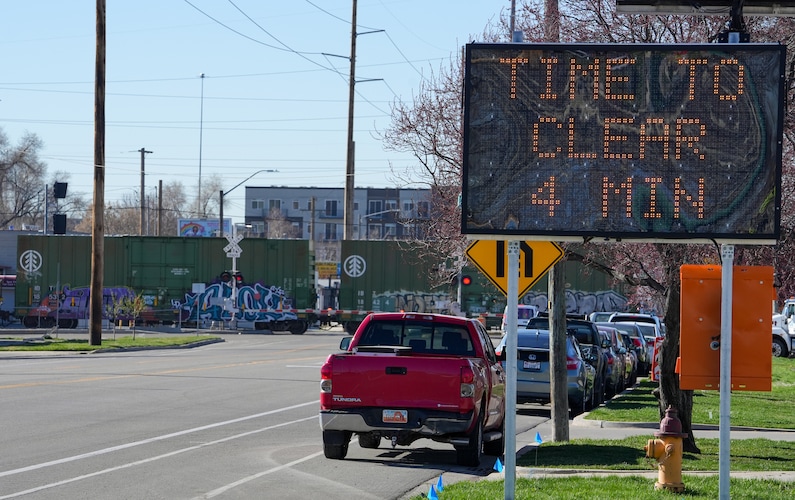Salt Lake City wants to notify more residents when traffic-clogging trains could block their commutes and bike rides across the city’s frustrating east-west divide.
Transportation officials plan to expand the city’s Trainfo system, which currently consists of electronic signs posted on 900 West (one at North Temple and the other at 400 South) that notify travelers when a freight train is about to block the road at South Temple. The system includes sensors that detect when a train is coming toward the intersection and predicts how long the wait for commuters will be.

(Chris Samuels | The Salt Lake Tribune) A sign informs drivers how long a train may take to cross 900 West near North Temple in Salt Lake City, Wednesday, March 26, 2025.
“We are excited to see the expansion move forward,” Dan Bergenthal, a Salt Lake City transportation engineer and Trainfo pilot program manager, said in a news release. “It will allow for more comprehensive coverage and better serve the community with timely and accurate information about railroad crossing activities.”
The capital city will do it with the help of a controversial partner: the Utah Inland Port Authority.
The port authority will contribute $150,000 to the full expansion project. City and port officials anticipate other agencies and groups will earmark further funds to install signs at five other rail crossings: 300 North, 200 South, 800 South, 900 South and 1700 South.
Unpredictable train delays have long drawn the ire of west-siders trying to get to work, doctors’ appointments and other important events on time. The street-level crossings, where trains rumble across key roadways like 800 South, also lead to longer emergency response times as first responders detour around intersections where they could otherwise be stopped for up to an hour.
(Chris Samuels | The Salt Lake Tribune) A sign informs drivers how long a train may take to cross 900 West near North Temple in Salt Lake City, Wednesday, March 26, 2025.
“The Trainfo expansion is a prime example of how strategic investments in infrastructure can lead to tangible improvements in safety and efficiency,” said Ben Hart, the port authority’s executive director. “We are proud to partner with Salt Lake City on this important initiative.”
The planned expansion comes as the city begins a long-promised study on the east-west divide created by the train tracks and Interstate 15. City leaders say the study will help them prioritize solutions for bridging the gap.





